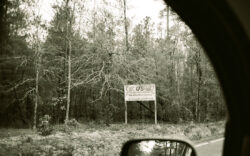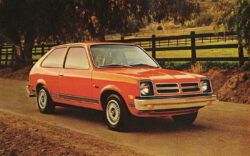The flags are gone from Prince Avenue. They were only a band-aid, now apparently proven to be just as ineffective as the enforcement of the one-way traffic on Newton Street alongside The Grit.
The question remains, though: Is Prince Avenue a thoroughfare or a location? Are Prince and its neighborhoods and its businesses places to go or places to drive through? Even admitting that they’re both changes the way you look at the street.
Speaking of flags, imagine a football Saturday. Cars speed down Prince Avenue, Dawg flags fluttering, heading toward the campus, or as close as they can get. (Flagpole parking still only $20: See Anita.) Those Atlanta football fans are not going to stop at Village Drugs or Daily Groceries or Avid Bookshop. Prince is merely their route to the football, and the faster the better.
On any day, Prince Avenue has a large contingent of people coming in from farther out, in a hurry to get downtown, mainly to the university for jobs and classes. Those commuters, including me, speed down Prince, changing lanes to avoid left-turners, dodging bicycles, slipping through yellow lights, keeping an eye out (please) for people trying to cross the street.
And people are trying to cross the street to reach nearby schools and businesses. Later in the day, they’re heading to and from restaurants and bars, crossing, perhaps unsteadily, in mid-block, when visibility is diminished but not speed.
Prince Avenue is, of course, divided in ownership—ACC from Pulaski to Milledge, GDOT from Milledge to the mountains, including Normaltown.
After a decade of doing nothing except waving ineffective flags, it appears that our government is ready and able at least to improve the flashing lights at some crosswalks. The present lights are perhaps as ineffective as the flags and give the same false sense of security to pedestrians, while inadequately alerting drivers.
When, a decade ago, the ACC commission declined to calm Prince by three-laning the street, the overriding argument was that it would strangle downtown. Slow people down, and they would divert to the Atlanta Highway and to the Oconee boxes beyond.
Changes in downtown since then weaken that argument, while the university remains the top draw. Until the campus is moved out to Highway 316, people heading for jobs and classes there will continue to come down Prince, even if they have to slow down. Will they continue to come down Prince Avenue to eat at DePalma’s, or will they instead hit the bypass and go on out to Oconee to eat at a chain restaurant?
Our do-nothing government has done nothing in 10 years to protect the special, local ambience of downtown and everything to assure that our city’s core will become indistinguishable from Oconee County. The university hasn’t helped, relocating faculty and students who used to stroll downtown to eat and shop. Meanwhile, the glut of high-rise student housing has assured the influx of hordes of consumers whose idea of local is what they have in Cobb County.
So, should Prince Avenue continue to be an expressway to downtown or should it be recognized also as a local street serving local businesses and neighborhoods? In the past decade, Piedmont College has replaced Prince Avenue Baptist Church, The Bottleworks is flourishing, and so is Normaltown. The surrounding neighborhoods continue to increase in popularity and value; a large, non-student apartment development is coming. In many ways, whatever flavor has been squeezed out of downtown has seeped onto Prince Avenue, blending the two areas.
The quick and relatively painless three-laning of Dougherty Street (some initial congestion, smoothed out with tweaks to the traffic lights) shows how it works. Until it’s time to consider that solution for Prince, we have the expertise and the means to make it safer now, if we can just treat it as the local avenue it is. Maybe we can mount an orange flag on a future pedestrian island as a reminder of when the street was so completely incomplete.
Like what you just read? Support Flagpole by making a donation today. Every dollar you give helps fund our ongoing mission to provide Athens with quality, independent journalism.










